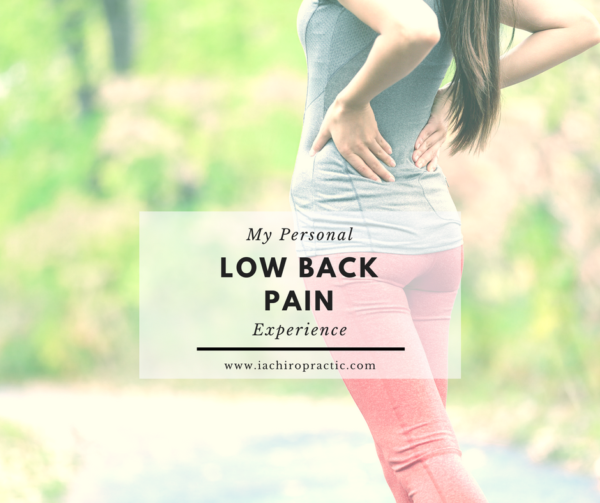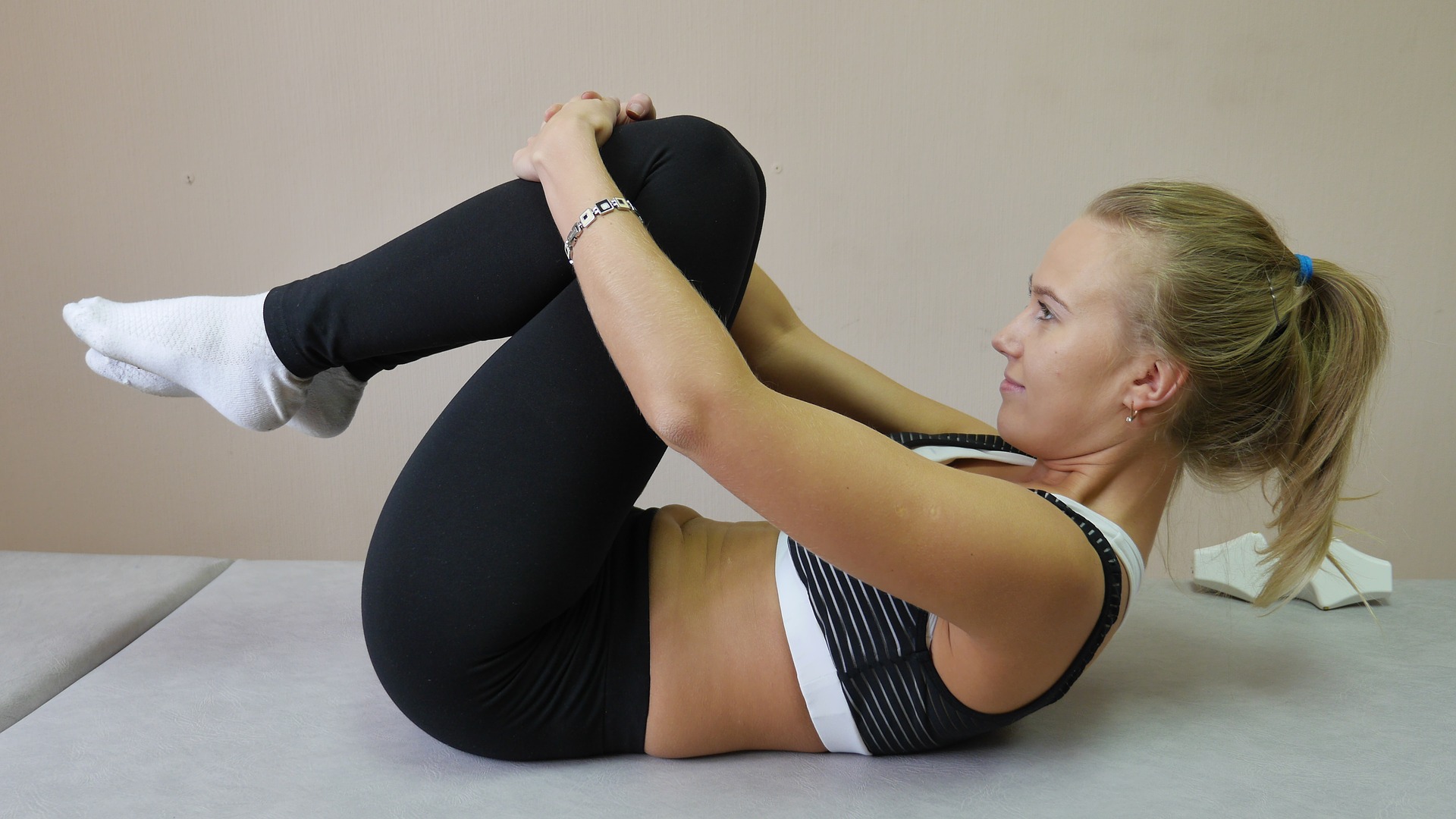
Most of us will experience Low Back Pain
It is commonly stated statistically that Low Back Pain (LBP) affects at least 80%of us some time in our lives, perhaps 20-30% of us at any given time. It is the fifth most common reason for all physician visits in the U.S. It is usually recurrent, and subsequent episodes tend to increase in severity. It is common in individuals who lead sedentary lives and in those who engage in manual labor or exercise. It can occur at any age but is most prevalent during the third through sixth decades of life.
My Personal Back Pain Experience
I want to share my own experience with Low Back and Sacral Pain because I think it is relatable and reveals some key concepts for dealing with chronic pain that can limit doing the things you love.
It seemed like a curse at the time but given my profession, and that I was able to overcome it, it was a true blessing that has helped to give me insight, understanding, and empathy to those I treat.
It started about 3-4 years ago. I was 25 at the time, nearing the end of chiropractic school, and had never once had a significant issue with my low back. I had had plenty of neck pain and various other pain and injuries but never my low back. I played lots of sports growing up and was always very into lifting weights. Prior to developing pain, I had been lifting weights seriously for just over 10 years, and during that time, had done tons of heavy squats and deadlifts and various similar exercises with never an ounce of pain in my low back. I had heard that plenty of others had low back pain with those kinds of exercises, so I thought that I was immune and that I must
…do the movements better,
…know more what I’m doing,
…or perhaps my back was tougher.
After all, not only was this a significant hobby, it was also part of my educational background – B.S. in Exercise Science and Kinesiology and Certified Strength and Conditioning Specialist. Not to mention, I was in chiropractic school (back pain school, right?) at the time. This was a pretty big blow to my professional self-confidence, as well as my ego and self-image – at first, I couldn’t even diagnose or fix myself, nor did it seem anyone in my spine-pain school could, and second, I’m supposed to earn a living fixing people like myself.
How it Started
It started somewhat suddenly, yet mysteriously. There was no warning and nothing had felt sketchy leading up to it. I was in the gym doing a fairly normal workout which on that day included some deadlifts and some sled leg presses – fairly heavy. During one set of single leg presses, something a little sketchy seemed to happen in my low back/sacrum – nothing crazy but enough to make me feel like it was time to call it a day. I walked out feeling fine but mildly perplexed – there was no real pain. It wasn’t until the next day that I noticed something wasn’t quite right. I had significant pain when I tried to stand from bed and significant pain anytime I got up from sitting. It hurt to bend over. It was annoying, but I wasn’t too concerned because certainly it would only last a day or two. And so started the next year and a half of life-altering low back pain.
At first, I tried to just resume my normal exercise routine, but it just hurt too much to try and put much weight on the bar. I couldn’t squat or deadlift or do any kinds of similar exercise movements. I couldn’t get off the couch without significant pain.
Finally, I decided to stay away from things that hurt my low back and thought “I guess I’ll have to give it a few weeks to heal”. A few weeks didn’t heal it. My pain level associated with normal activities like standing from the couch decreased, but as soon as I tried to resume my normal exercise routine, the pain was right back, and I felt that I set myself back at least a week in healing time. This continued for several cycles.
Treatment and Worry
I got adjusted by several so-called different technique systems from different practitioners including, Gonstead, Diversified, Thompson drop technique, and upper-cervical specific. I tried massage, active release technique, Graston, electric-stim, ultrasound, ibuprofen, ice, heat, and changing my diet. I stretched, changed my exercise routine, tried to strengthen my core, and had x-rays – twice. I thought that maybe I really needed an MRI – an MRI would certainly reveal the “problem”, right? I never got an MRI.
I began to get very concerned about what was going on with my back. What was my diagnosis? Is there anybody who could tell me what was wrong with me? What had I done? Why wouldn’t it heal? Was this going to last forever? Was it cancer? (Doctors can be terrible hypochondriacs because we’re frequently exposed to low percentage diseases which can make them seem much more likely and common.) I thought, maybe it’s chemical, maybe I’m deficient in something or my diet is creating an inflammatory condition. Would I never be able to feel like I was in control of my body again, and would I never be able to do activities that I love without fear and uncertainty of re-injury? I went through stages of grieving like anger, depression, and bargaining – I never fully accepted it, but was close.
I know this sounds dramatic, and I’d be more embarrassed to admit it had I not dealt with many people with a very similar experience.
The Silver Lining
This all helped to prompt me to get more into research and begin to read textbooks by the experts on low back pain. Books like Low Back Disorders by Stuart McGill and Rehabilitation of the Spine by Craig Liebenson. I began to get some ideas and experiment but still didn’t really understand my pain. I started to get into the pain science and reading research on chronic pain and how pain neurology works. I read a great book, Explain Pain by David Butler and Lorimer Mosely. These textbooks should have been required reading in chiropractic school. Luckily I had a couple outstanding professors in chiropractic school and a few peers that exposed me to these great resources and many others.
I began to become much more familiar with the larger picture of non-surgical, nonpharmaceutical physical medicine – not just the chiropractic corner. Things like the need for stability and motor control, areas we need mobility and areas we don’t need much, techniques for more thorough assessment and exam and treatment. I read Movement by Gray Cook and became certified in the Selective Functional Movement Assessment.
I became aware of sensitization of the nervous system and the biopsychosocial model – a model that takes into consideration the interconnectedness of the systems of the body. I became aware and read works from people that were doing great work and making much more sense of pain and dysfunction.
On one hand, all this study really took a toll on my confidence as a doctor – I was made extremely aware of my inadequacies and short-comings. On the other hand, I tried to remind myself that this stuff is difficult and complicated and even if I didn’t integrate this knowledge into practice, I would still be practicing at a pretty “normal” and “adequate” level – which I personally found unacceptable.
I began to increase my trust in realizing that tissues are supposed to heal – pain shouldn’t last forever. I tried hard to believe this and worked in pain-free ranges of motion and loading of various squat, deadlift, and hip-hinging patterns. It took time, but I started to be able to do more than I expected I could. The problem had gone on so long that although I was happy, I was still very skeptical and scared that the problem would reoccur, and I would reinjure myself going into another spiral of a long period of pain and decreased function. I thought, “why push it, just be satisfied with a moderate weight.”
So many people talk about a time, whether in their 20’s, 30’s, or beyond when their body “gives out” and a BAD back, knee, hip, or whatever makes them slow down – perhaps this was my time. But I kept enough belief and tried to progress intelligently and listen to my body and not get in a hurry.
Finally, Pain Relief
After a year and a half, I finally came to a point where I could accept that I was better. The pain was gone, and it seemed that I could do whatever I wanted without pain. The memory still remained quite closely, and I wasn’t about to go crazy seeing if I could reinjure myself. At that time, I still didn’t really know what had gone wrong or have a diagnosis for myself. I assumed it was Discogenic pain (It’s always disc pain – not really, but it’s common), perhaps an endplate fracture, maybe facet irritation – I never really thought it was facet pain (Turns out, it probably was facet driven pain). Almost certainly I was experiencing some degree of central sensitization.
Going Forward
Almost 4 years later, I have regained all of my confidence to lift as heavy as I’d like – which includes squats, deadlifts, cleans, snatches, kettlebell swings, ANYTHING. I will never feel as ignorantly invincible (I do sort of miss those days.) as I once did, and I now have a lot more respect for moving correctly and being smart. I now know my dysfunction and faulty movement pattern that started everything. It was a lumbosacral hyperextension fault. I understand why I moved that way, and I now know how to NOT move that way, which is the TRUE KEY, TRUE DIAGNOSIS, and TRUE FIX, along with addressing my BELIEFS about my pain and injury. Knowing the pain generator is nothing compared to knowing what the dysfunctions are that are triggering that pain generator.
About 10 months ago, I had a little scare when I started doing some heavy hip thrusts and felt the similar pain returning. I quickly identified that I was hyperextending my lumbosacral joint. I stopped doing it, took 2 weeks to heal, figured out what I did wrong, and corrected it. Then I sent Bret Contreras (the glute guy and hip-thrust guru) an article about it. Click here to read that article.
Resources and Advice for Chronic Pain Sufferers
Start with the following video. It’s a short look at understanding how chronic pain is different than acute pain and needs to be treated differently.
Additionally, I highly recommend the book Explain Pain by Lorimer Mosely and David Butler.

It’s geared towards the non-expert, which incidentally, also includes the majority of professionals that work with people in pain.
Lastly, it can be of great benefit to find a practitioner that has a larger understanding of pain, who can help you to move better, spare your tissues, and help you to build confidence in moving without pain.
One other video that will help you on your path of understanding and overcoming chronic pain is an entertaining TedTalk by Explain Pain author, Lorimer Mosely.

